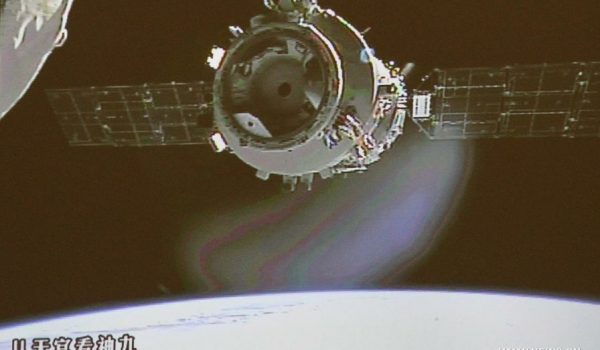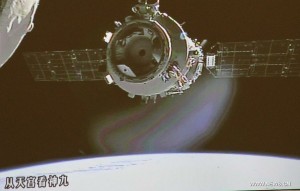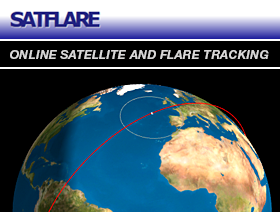

Shenzhou-9 pulling away from Tiangong-1 in preparation for the manual docking (Credits: Xinhua/Zha Chunming).
On June 24, six days after successfully executing an automated docking procedure that brought inhabitants to the Chinese space lab Tiangong-1, the Shenzhou-9 successfully withdrew from the station and repeated the performance – this time under manual control. According to Chinese manned space program spokesman Wu Ping, the docking was “a complete success.”
“The manual docking was beautifully conducted. It was very accurate and swift, ” said Liu Weibo, who is responsible for China’s astronaut system. Taikonaut Liu Wang piloted the Shenzhou-9 through the complicated maneuver in just seven minutes – three minutes faster than the automated docking.
Manual docking capability is critical to rendezvous operations. As Zhou Jianping, designer-in-chief of China’s manned space program, put it: “The automated docking and manual docking are both essential and they serve as a backup for each other.” China is the third nation after the US and Russia to develop such capability.
Shenzhou-9 isn’t the only Chinese vessel setting records these days. The spacecraft’s crew exchange congratulatory messages with Chinese submarine Jiaolong which set the country’s record for deepest dive on June 22 and is currently located in the Mariana trench 7,015 meters below the Pacific Ocean’s surface.
After docking, the taikonauts reboarded Tiangong-1 to continue their experiments. They will remain there another four days before returning to Earth on June 29.
Below, a news report on the historic manual docking:

















































































































![A trajectory analysis that used a computational fluid dynamics approach to determine the likely position and velocity histories of the foam (Credits: NASA Ref [1] p61).](http://www.spacesafetymagazine.com/wp-content/uploads/2014/05/fluid-dynamics-trajectory-analysis-50x50.jpg)



Leave a Reply